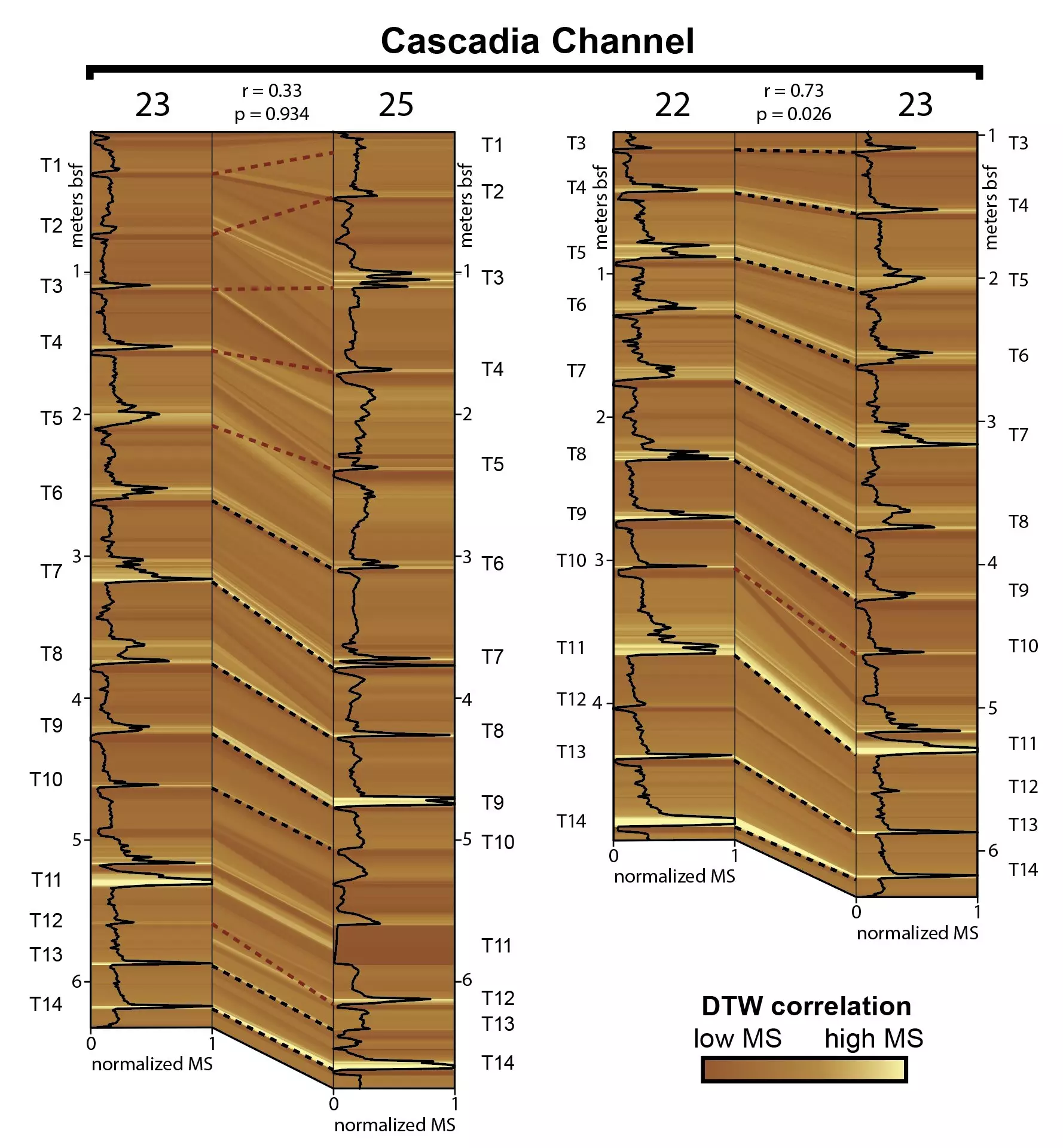The Cascadia subduction zone, which stretches along the Pacific Northwest, is infamous for its capacity to unleash powerful earthquakes, a phenomenon that has perplexed scientists and concerned residents for centuries. Historical records indicate that a significant seismic event occurred as recently as 1700, yet the frequency and predictability of future quakes remain hotly debated topics among geologists. This region, now filled with bustling urban centers housing millions, could be dramatically affected when the next large quake strikes. Efforts to estimate the timing and magnitude of such earthquakes often rely on geological records, notably turbidites—sedimentary deposits formed by underwater disturbances.
Yet a recent study conducted by scientists at The University of Texas at Austin challenges the conventional wisdom surrounding these turbidite layers, casting a shadow on their linkage to historical seismic events. The study raises essential questions about the methodologies used in earthquake frequency assessments, as keen attention is paid to the ways in which sedimentary records are interpreted.
Turbidites occur as a consequence of sediment-laden water flowing down the ocean floor, often triggered by disturbances such as earthquakes, storms, or other geological activities. The sediment layers display a distinctive gradation: coarser materials settle at the bottom while finer grains accumulate on the top. Traditionally, the presence of these turbidites has been assumed to indicate past seismic activity, with researchers identifying them through geologic cores collected from seafloor sediments. However, the study highlights that this assumption may not be as reliable as once thought.
Analyzing turbidite layers that date back around 12,000 years, researchers employed an innovative algorithm to assess the correlation between various samples. Surprising results indicated that the connections between the layers were often no better than random chance. This significant finding forces a re-examination of how geologists link turbidites to historical quakes, with co-author Joan Gomberg stressing that past timelines for Cascadia earthquakes should be reconsidered.
Despite the unsettling implications of the findings, the researchers emphasize that the study does not alter the existing estimates of earthquake frequency in the Cascadia zone, which remains approximately every 500 years. This estimate stems from a wide array of geological evidence, not exclusively from the turbidite analysis carried out in this study. Nonetheless, the research underscores the necessity for further investigation into how these turbidite layers can be understood in relation to seismic activity.
The algorithm developed and applied in this study, termed “dynamic time warping,” has shown promise in other fields, such as voice recognition and dynamic graphics processing. Its unique ability to detect similarities in time-varying data was repurposed for geoscientific analysis, offering quantitative insight where subjective interpretations previously dominated. Co-author Zoltán Sylvester points out the tool’s potential to standardize geological assessments, which can vary significantly depending on the geologist’s perspective and methodology.
One of the core challenges of linking turbidites to past earthquakes lies in their inherent variability. Dynamic geological processes can create layers that differ greatly in appearance and composition across small geographic distances, complicating any attempt to correlate them with singular seismic events. Co-author Nora Nieminski notes that such variability is expected in an active margin like Cascadia, necessitating skepticism when interpreting data.
Further enhancing the study’s credibility, the researchers validated their algorithm’s findings against synthetic datasets of random turbidite layers. This rigorous comparative analysis revealed that correlations deemed significant in prior analyses did not hold, except in select cases where turbidites were located within a relatively close range, supporting the need for localized studies.
While the results of this research raise vital questions about the efficacy of using turbidite records to predict seismic activity, they also pave the way for more refined methods of geological investigation. As the study illustrates, algorithms and advanced data analysis can augment traditional geological techniques, but they must be coupled with expert interpretation to yield meaningful insights.
As the coastal residents of the Pacific Northwest remain ever vigilant, cognizant of the potential for future seismic events, the implications of this study highlight the ongoing need for an adaptive and informed approach to earthquake preparedness. Though uncertainty looms over the historical record, the tenacity of researchers to probe deeper ultimately contributes to a more comprehensive understanding of the Cascadia subduction zone—an area that has both a storied past and a complex future.


Leave a Reply